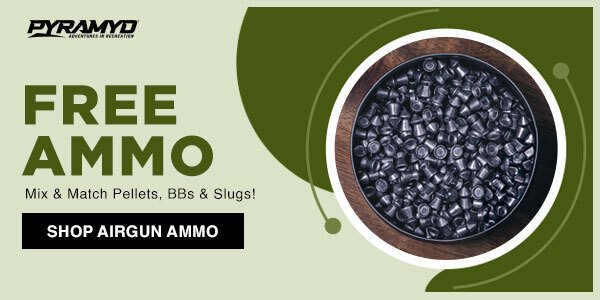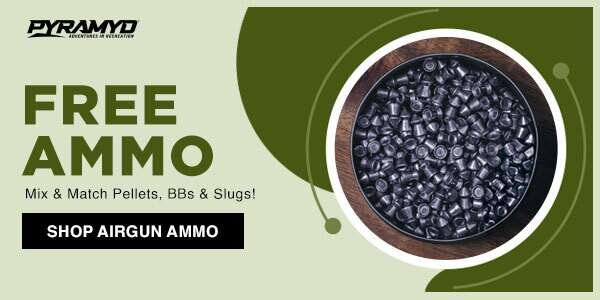Why .20 caliber?

Today reader RidgeRunner, gives us his opinion of why the .20 caliber pellet exists. If you’d like to write a guest post for this blog, please email me at blogger@blogger.com.
Take it away, RidgeRunner.
Why .20 caliber?
By RidgeRunner
This report covers:
- Why .20 caliber?
- What happened
- But why .20?
- Remember the velocity wars?
- Quality
- Cost
- My selection
- Summary
Why .20 caliber?
Perhaps the real question should be, why not? Why not? Once upon a time, it was a pretty popular caliber with airgunners. There was even an airgun company that was devoted to that caliber. [Editor—That would be the Beeman company when Robert Beeman owned it.] So, what happened?
What happened?
Basically, it was the velocity wars. Newbies wanted more and more velocity. Because bullets from powder burners were screaming along at several times the speed of sound, those who did not know any better thought pellets from airguns should be also. There are a couple of problems with that. When using air as a propellant, you can only go so fast. This thing called physics keeps raising its ugly little head.
Now, do not be scared. I am not going to launch into all of those formulas and such which can cause heads to explode. Just take my word for it. Despite what the marketeers try to tell you, you are only going to get a pellet going so fast and no more when you push it with air.
Another problem is the pellet shape. The diabolo shape is great for stability and accuracy at short ranges, but the skirt causes a rapid loss in velocity. In recent times there has been much talk about shooting bullets (slugs), but they are still not quite there and they often require a different twist rate than standard airguns.
But why .20?
Way back when, the .20 was quite popular. At short ranges, the .177 was and is still king in the short range accuracy department. Much research and quality control has gone into the .177 to insure it stays that way.
One of the problems with .177, though, is mass. At longer ranges this caliber is more affected by crosswinds and because of the lack of mass, it runs out of steam and just falls to the ground.
Nowadays the .22 is quite popular, but at one time it was not. The quality of pellets that were available after WWII was not that great. The mass of the .22 meant that it would carry further than the .177, but could you hit what you were shooting at? It also was much larger in diameter and made a bigger wound channel, but you still had the problem of hitting your quarry.
Along came the .20. It was larger and had more mass than the .177 which meant it could endure higher crosswinds and retain more energy at longer ranges, but it used less lead than the .22. It was also faster than the .22 in a given airgun. The wound channel it created was almost as large as the .22 as well. It seemed like the .20 was the answer to the dream. Well, not quite.
Remember the velocity wars?
Remember the velocity wars? When AirForce Airguns launched the Condor it sent .22 pellets screaming along at incredible speeds—for an airgun that is. The .22 was going every bit as fast as the .20. It also made a slightly larger wound channel when it got there.
Quality
Something else that doomed the .20 was quality. And I’m not talking about the quality of the .20-caliber pellets. Though .20-caliber pellets did improve over the years, so did .22-caliber pellets. Some .22 pellets and airguns have improved in quality to the point that you can actually hit what you are shooting at a considerable distance away.
Cost
Another thing that doomed the .20 was cost. Except for the use of less material to make the .20, the cost of making any pellet is about the same. When you factor in a much lower demand for that caliber, for some airgun ammunition manufacturers it is just not worth the costs involved.
Here in the USA there is not that great a demand for airguns chambered in that caliber. As we do not have the power restrictions that many in this world have, we are more inclined to go with .22-caliber or even larger. We like bigger! Yeah!
Many in this world are limited by how much power they can have. The .20 makes more sense to them as it does make for a larger wound channel than the .177 and usually carries farther with more accuracy and power.
My selection

My older assortment of pellets.
I have an AirForce Ultimate Condor chambered in .20. Thanks to a couple of friends on this blog I have quite a selection of pellets in this caliber. Above I have some of the oldies that used to be available in the marketplace. They are the Beeman Perfect Round, the Hy-Score Pointed, the Beeman Pointed, the RWS Hobby, the RWS Super Hollow-Point, the Sheridan pellet and the Benjamin pellet.
Below are some of what is available these days. From left to right they are the JSB Exact, the JSB Heavy, the H&N Field Target Trophy and the H&N Baracuda. Not too bad a selection really.

These are several of the .20-caliber pellets that can be bought today. They are named in the paragraph above.
Summary
There is an upside to all of this. With the lower demand for this caliber, most of the pellets still made are of top-shelf quality. Most manufacturers do not bother with the weird gobbledygook designs for .20 as they do not sell that much anyway.
Do I see this caliber becoming popular again? Probably not. Some knowing folks may get serious with this caliber, but with the rise in power, accuracy and quality of the other calibers, the .20 will very likely follow behind the other calibers that have gone before it.
The post Why .20 caliber? first appeared on Pyramyd AIR.



Leave a Reply
You must be logged in to post a comment.